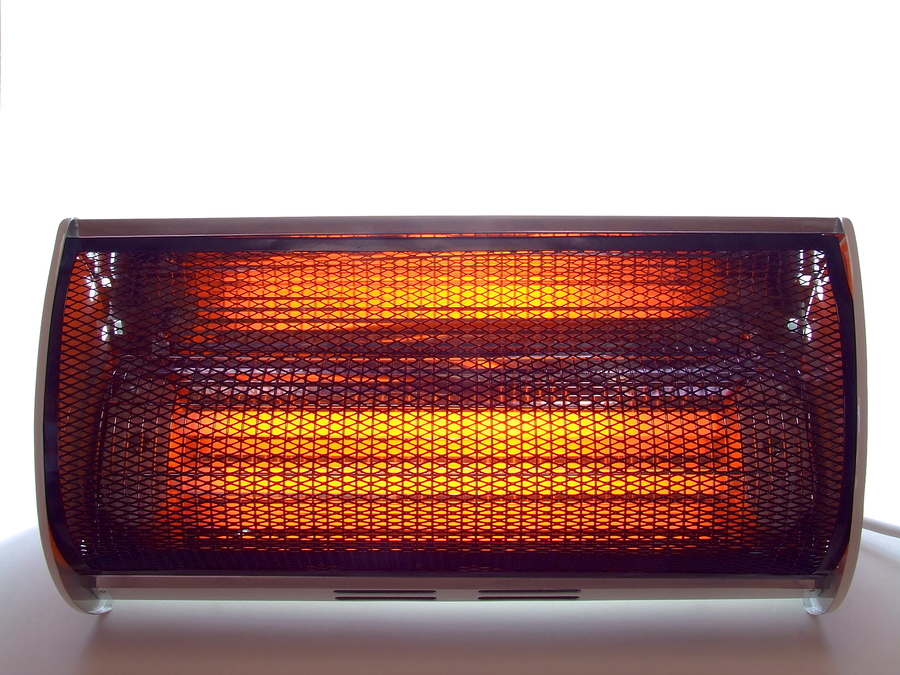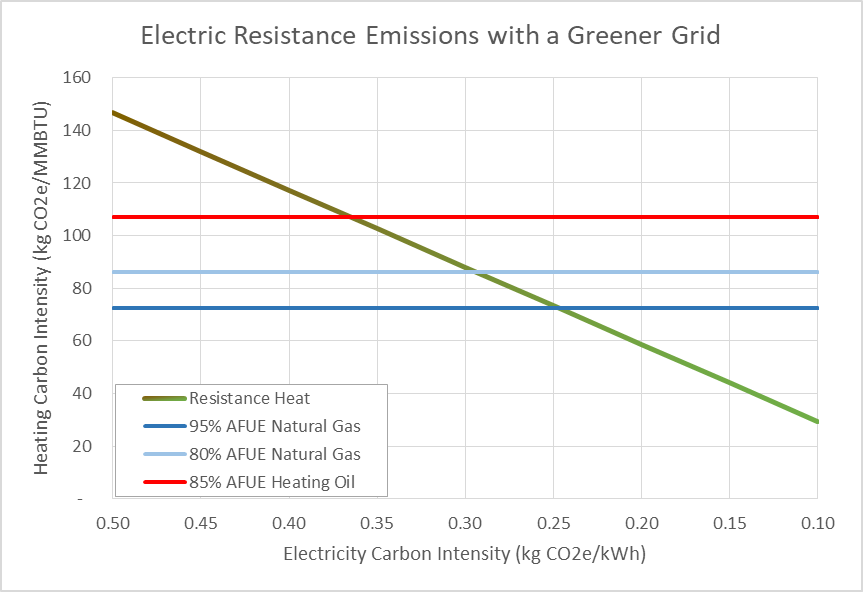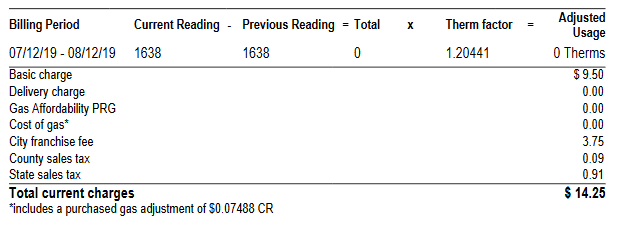Grandma's Baseboard Heat: Electric Resistance
Electric resistance heat is an energy hog. But it's extremely well-suited to work as rarely-used backup for a heat pump.

This article is Part 5 of our ongoing series: The Ultimate Guide to Low-Carbon Heating in Minnesota.
You can go back to Part 4 here: Going Ductless: Heat Pumps without Forced Air.
Our last two articles (here and here) have been about air-source heat pumps (ASHPs). ASHPs are the most efficient and climate-friendly way to heat, but they have the disadvantage of requiring a backup heat source. This backup heat is most commonly natural gas, but there is another option: electric resistance.
Electric resistance heating works by running electric current through a heating element, which converts the electric power directly to heat. It is simple and ubiquitous, powering toasters, hair dryers, ovens, electric blankets, space heaters, and the old-school baseboard heaters you often seen out in the country.
Could it be a good alternative for heat pump backup?
Energy Efficiency
The biggest problem with resistance heat is that it’s extremely inefficient. Whereas a good heat pump can crank out 10-11 BTUs of heat per watt on average, resistance heat is always exactly 3.41 BTUs per watt. That means it uses three times as much electricity!
Environmental Impact
This high energy usage means that electric resistance is the most carbon-intensive way to heat. But it will get greener as the grid adds more renewable sources! Once electricity’s carbon emissions are lowered to 0.25kg/kWh or less, resistance heat will be cleaner than even a high-efficiency gas furnace. Xcel plans to surpass this mark in the next 5-7 years.

As the grid gets cleaner, resistance heat will become cleaner than burning fuel.
So in the context of a heating appliance that will last for decades, electric resistance isn’t so bad.
(And for those with solar panels or a renewable energy subscription, electricity is already 100% carbon-free.)
Operating Costs
Resistance heat’s high energy usage means it is also very expensive. If you were to use it for your entire heating system, it would cost you $1,700/year. That would be the most expensive way to heat your home – even more so than heating oil, and about triple the cost of a standard gas furnace.
But if we’re using a heat pump for 90% of our heating needs, the operating costs for a backup system aren’t necessarily that important. After all, it’s running only 10% of the time. More important characteristics for backup heat are reliability and maintenance costs. And these are where resistance heat shines.
Reliability & Maintenance
With a correctly-configured heat pump, your backup heat remains idle for nearly the entire year, and kicks on for a few of the coldest days in January and February. The last thing you want is for the backup heat to fail on those extreme-weather days when you need the most heat.
But this usage pattern is a worst-case scenario for gas furnace reliability! The most common times for combustion equipment to fail are after a long period of inactivity, or when it is run continuously for hours at a time. And when a gas furnace fails, it usually fails hard and cannot provide any heat at all.
Additionally, most furnace manufacturers recommend annual inspections by an HVAC professional. Some will even void the warranty if you skip this. A $100 maintenance visit for a rarely-used furnace doesn’t make financial sense.

This is what happens when your backup heat fails.
Resistance heat, on the other hand, is extremely reliable and requires no maintenance. There are no moving parts and no ignition sparks required, and the most common failure mode – a burnt-out heating element – simply reduces the heating output rather than shutting down the whole system.
All in all, resistance heat is a huge winner when it comes to reliability and maintenance.
Installation Costs
Generally speaking, resistance heating equipment is quite a bit cheaper than gas equipment. Typical installation costs are $2,000-$2,500.
But when switching from gas to electric, the heavy electrical requirements can sometimes lead to a much higher installation cost. Resistance heat for a typical home needs 80-120 amps of dedicated capacity, and many homes (especially older ones) are only wired to support 100 amps for the entire building. In this case, an electrical “service upgrade” is required, which typically costs another $2,000-$4,000.
Of course, upgrading your service has other benefits. It means your circuit breakers and electrical panel are replaced with modern, safe technology. And it is often required to support other clean technology like solar panels or an electric vehicle charger.
Health & Safety
Another advantage to using electric resistance backup rather than gas is that it lets you remove gas from your home entirely. This eliminates a major source of carbon monoxide poisoning, which sends thousands of Americans to the hospital every year. There are also links between gas combustion and respiratory ailments like asthma, especially in young children (although the link is more clear for gas stoves, specifically).
Standby Costs
If you’re able to go all-electric, you will also save a decent amount of money by eliminating your natural gas meter. For instance, in my hometown of Bloomington, the fixed service charge alone is over $160/year!
These fixed charges will more than offset the increased cost of running the resistance heat.

Each month, I get the privilege of paying the gas company $14 just to have a meter.
Overall Ratings
On its own, electric resistance heat is a terrible, dirty, expensive way to heat your home. But as a rarely-used backup for a cold-climate heat pump, it’s a very good option.
To provide an apples-to-apples comparison between heat pump backup modes, we are rating both electric resistance and natural gas below with the assumption that a cold-climate heat pump is supplying 90% of the home’s heating load.
* The natural gas fuel cost includes a $10/month fixed service charge.
An Esoteric Note About Electric Rates
One thing you should be aware of is that if you go all-electric, you will no longer qualify for the “dual fuel” discount for your heating electricity. Instead, you will get a lesser discount applied to all of your electricity. So rather than having two meters: one for your heating (billed at 7.5c/kWh) and another for the rest of your home (billed at 12c/kWh), you will have a single meter billed at 9c/kWh.
This means that with all-electric, your heating electricity will be a little more expensive but the rest of your electricity will be a little cheaper. The monthly service charges will also be a little bit lower since you only have one meter.
With an efficient heat pump system, the overall cost difference is probably negligible.
About 2040 Energy
We are building RenewaBoiler — the first cold-climate heat pump designed for hot water radiators.
To follow our progress, sign up for email updates below. (We promise to respect your inbox!)